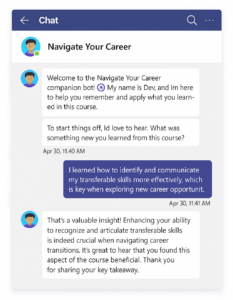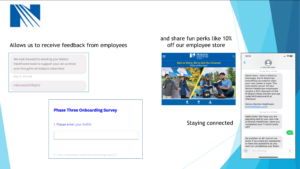Defining artificial intelligence is like trying to hit a moving target. It depends on when you ask and who you ask. It seems as though the more you search, the more definitions of artificial intelligence you find.
Early computer scientists answered the question of artificial intelligence with theories. In the 1950s, during the Dartmouth Summer Research Project on Artificial Intelligence, John McCarthy proposed that “every aspect of learning or any other feature of intelligence can in principle be so precisely described that a machine can be made to simulate it.” Around the same time, computer scientist Alan Turing famously asked, “Can machines think?”
In a 2017 TEDx Talk, Jay Tuck posited that “artificial intelligence is software that writes itself.”
Googling “definition of artificial intelligence” gives the dictionary definition “the theory and development of computer systems able to perform tasks that normally require human intelligence, such as visual perception, speech recognition, decision-making, and translation between languages.”
If asked, many people on the street would cite films like Terminator, Star Trek, or 2001: A Space Odyssey as examples of what artificial intelligence is. What these films have in common are characters that think like and desire similar things as humans. Artificial intelligence is not at that point yet, and some AI experts have debated whether it ever will be.
Sci-fi artificial intelligence brings up an important distinction, however. The AI depicted in films like those mentioned above is called general artificial intelligence: adaptable, flexible intellect similar to what humans have.
Narrow artificial intelligence refers to applications such as chatbots, drones, personal assistants (e.g. Siri, Google Assistant, and Alexa), programs that spot possible tumors, and bots that play games like chess at competitive levels. This type of AI is what we have today.
Interestingly, some do not consider any of the above applications to be artificial intelligence. Richard Socher explains how “whenever we solve a problem, we don’t quite call it artificial intelligence anymore.” He goes on to say, “Understanding spoken words… was actually a really hard problem up until 2010 when deep learning changed it. … we don’t call it AI anymore, it’s just Siri, just a speech recognition software.”
Regardless of the many ways to define artificial intelligence, the main idea behind AI is clear. Artificial intelligence is when machines carry out intelligent tasks that previously only humans could do.
Want to learn more about AI? Here are some resources on artificial intelligence:
- Linkedin.com Artificial Intelligence vs Machine Learning
- Twitter.com Artificial Intelligence in Banking
- Forbes.com 5 Myths About AI
- Thetechadvocate.com 5 Ted Talks About Artificial Intelligence
Want to learn more about chatbots? Check out our blog series here!
This article is the fifth in a nine-part series on what chatbots are and how they work. Consider subscribing to our blog or newsletter to receive notifications on when new articles are posted.



